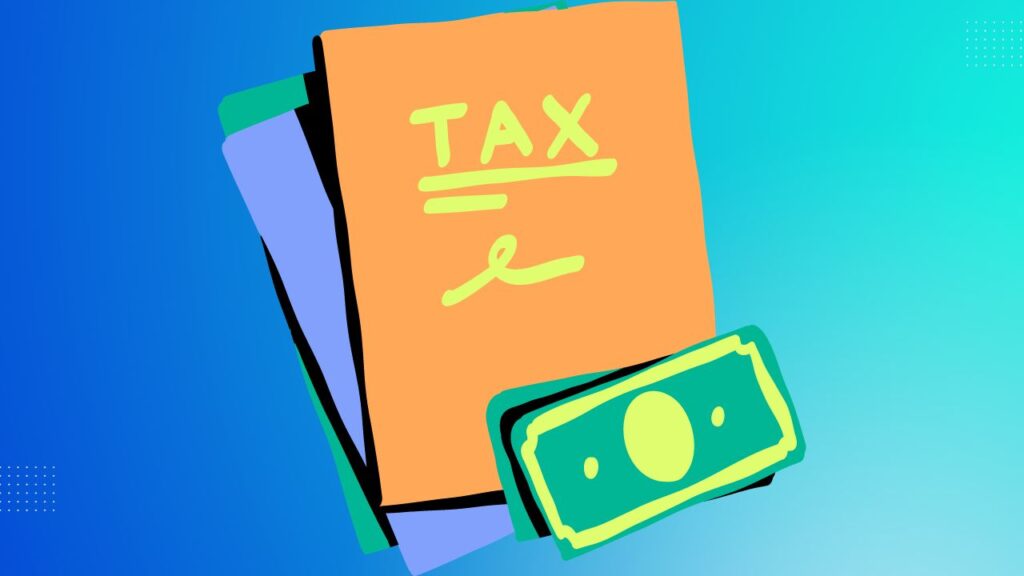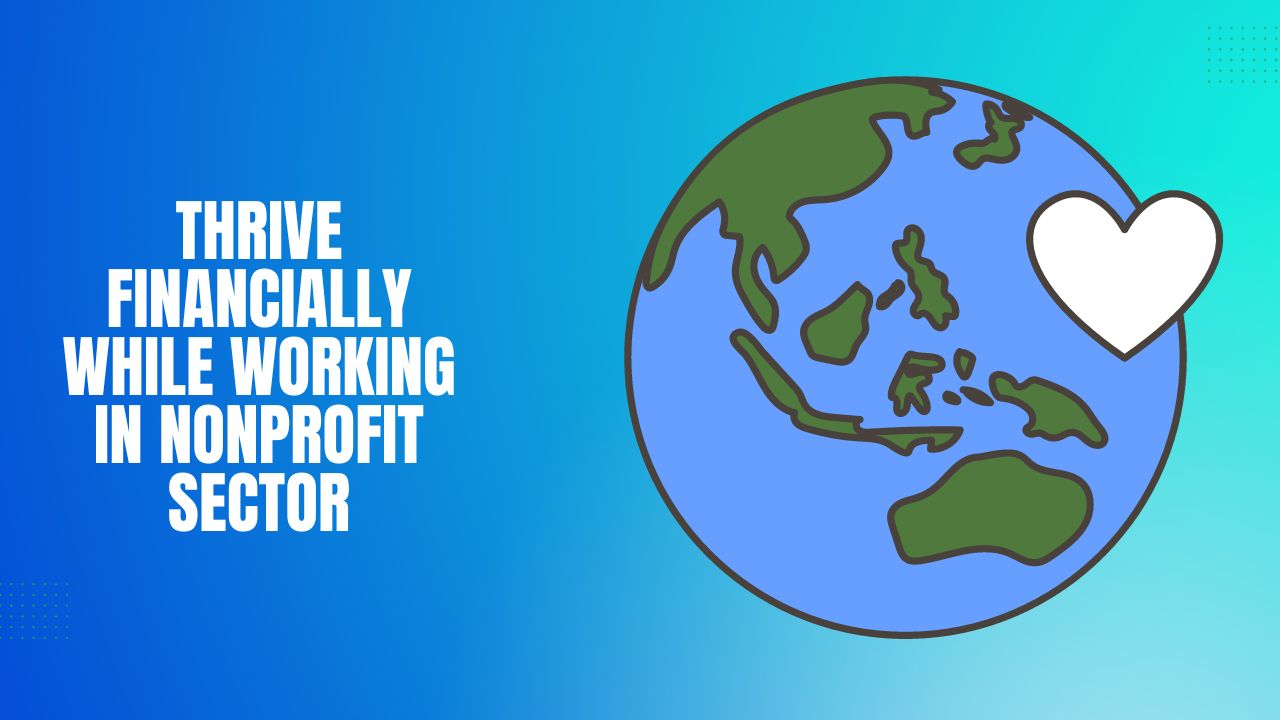Let’s dive into a topic that’s not just about growing your bank account – it’s about making a positive impact on the world while keeping your own financial ship afloat.
Picture this: You’re a millennial with a heart full of passion, working your tail off in the nonprofit sector, determined to save the world one day at a time.
But let’s face it, making a difference doesn’t always come with a cushy paycheck.
In fact, statistics show that millennials are flocking to nonprofit careers, with 84% of them believing that “making a positive impact” is more important than financial success.
So, how do you thrive financially while saving the world? That’s precisely what we’re here to unpack.
We’ve got the research, facts, and figures to guide you through managing personal finances while working in nonprofits.
Buckle up, friends, because it’s time to find that sweet spot where your bank balance and your mission to change the world intersect!
1. Strategies for Budgeting and Saving

1.1 Building an Effective Budget
Now, I know the word “budget” might sound restrictive, but trust me, it’s your ticket to financial freedom.
Here’s the breakdown:
1.1.1 Identifying Income Sources
You’ve gotta know what’s flowing in, right? Start by listing down all your income sources.
That could be your nonprofit salary, any side hustles, grants, or even scholarships. Keep track of every penny coming your way.
| Income Source | Amount (Monthly) |
| Nonprofit Salary | $X,XXX |
| Side Hustle | $XX |
| Grants/Scholarships | $XXX |
| Other | $XX |
| Total Income | $X,XXX |
1.1.2 Allocating Expenses
This is where we get real. List out all your monthly expenses. Be honest and thorough.
And don’t forget those little sneaky ones like Netflix or that daily coffee fix.
| Expense Category | Amount (Monthly) |
| Rent/Mortgage | $X,XXX |
| Utilities | $XXX |
| Groceries | $XXX |
| Transportation | $XXX |
| Entertainment | $XX |
| Debt Payments | $XX |
| Savings/Investments | $XXX |
| Other | $XX |
| Total Expenses | $X,XXX |
Now, here’s the magic part. Subtract your total expenses from your total income, and voilà! You’ll see exactly how much you’ve got left for savings or paying down debts.
Related Article: How To Create A Budget And Stick To It
1.2 Setting Financial Goals
Now, my friend, you need a roadmap for your money. That’s where financial goals come in.
1.2.1 Short-Term vs. Long-Term Goals
First, we’ve got short-term and long-term goals. Short-term goals are like the little victories you want to achieve within a year or so.
Long-term goals are your big dreams that might take several years, like buying a house or retiring comfortably.
Research shows that having clear goals makes you 42% more likely to achieve them.
1.2.2 SMART Goals for Nonprofit Professionals
Here’s the secret sauce: Make your goals SMART – Specific, Measurable, Achievable, Relevant, and Time-bound.
| Goal | SMART Criteria |
| Short-Term Goal Example | Save $2,000 for emergency fund in 6 months |
| Long-Term Goal Example | Retire with $1 million by age 55 |
By making your goals SMART, you’re setting yourself up for success. You’ll know exactly what you’re aiming for, how to track your progress, and when you’ll achieve it.
So, grab a pen and paper, and jot down your financial goals. Make ’em SMART, and you’ll be on your way to financial greatness, even while changing the world through nonprofit work!
Related Article: The Key to Financial Success: Balancing Short and Long-term Goals
1.3 Creating an Emergency Fund
1.3.1 Importance of an Emergency Fund
Imagine this: You’re on a mission to save the world, and suddenly, your car breaks down, or you face unexpected medical bills.
That’s where your emergency fund swoops in to save the day. It’s like a financial superhero.
Research shows that over 40% of Americans can’t cover a $400 emergency expense without borrowing or selling something.
Having an emergency fund prevents you from joining that statistic.
1.3.2 Savings Strategies for Millennials
Now, you might wonder, “How do I start an emergency fund?” Easy peasy. Here are some strategies for us millennials:
- Set a Goal: Aim for at least three to six months’ living expenses. That’s your target.
- Automatic Savings: Set up automatic transfers to your emergency fund. It’s like paying yourself first.
- Cut Unnecessary Expenses: Ditch that daily coffee run or reduce dining out. Redirect that money to your emergency fund.
- Use Windfalls: Tax refunds, bonuses, or unexpected cash? Put a chunk of it into your fund.
- High-Yield Savings: Stash your fund in a high-yield savings account to earn a bit more.
Here’s a simple table to track your progress:
| Month | Emergency Fund Balance |
| Month 1 | $500 |
| Month 2 | $1,000 |
| Month 3 | $1,500 |
| Month 4 | $2,000 |
| Goal | 3-6 months of expenses |
Having an emergency fund isn’t just smart; it’s essential for financial security. So start building yours today and keep on saving the world with peace of mind!
Related Article: Strategies For Building An Emergency Fund
2. Increasing Income in the Nonprofit Sector

2.1 Diversifying Income Sources
2.1.1 Exploring Part-Time Opportunities
One smart move is to consider part-time gigs. Check this out:
- Part-Time Work: Find a part-time job that suits your skills and schedule. It’s extra cash in your pocket.
- Online Platforms: Think about freelance websites like Upwork or Fiverr. They’re great for part-time gigs.
- Gig Economy: Apps like Uber, Lyft, or food delivery services can help you earn on the side.
- Temporary Work: Seasonal jobs or temp work can give your income a boost too.
2.1.2 Freelancing and Side Hustles
Now, let’s dive into the world of side hustles:
- Freelancing: If you have a skill like writing, graphic design, or coding, offer your services online.
- E-commerce: Sell stuff on platforms like Etsy or eBay. You’d be amazed at what people buy.
- Teaching/Tutoring: Share your knowledge as an online tutor or teach a skill you’re good at.
- Passive Income: Explore things like affiliate marketing or creating an online course.
Research shows that the gig economy is growing. In 2021, nearly 36% of the U.S. workforce freelanced.
Remember, diversifying your income sources is like creating a financial safety net. It’s your key to thriving financially while you’re out there saving the world!
Related Articles: Smart Strategies for Diversifying Your Investment Portfolio
2.2 Salary Negotiation Techniques
2.2.1 Researching Salary Benchmarks
Before you even step into that negotiation room, do your homework:
- Online Tools: Use websites like Glassdoor or Payscale to research average salaries in your field.
- Network: Talk to people in similar roles. Find out what they’re making; it’s like insider info.
- Check Industry Reports: Some industries publish salary surveys. Grab those reports for data.
Research shows that negotiating your salary can increase your earnings by 7-10% on average.
2.2.2 Effective Salary Negotiation Tips
Now, let’s talk strategy:
- Timing Matters: Negotiate after a job offer, not during the interview.
- Be Confident: Believe in your worth and convey it.
- Have a Number: Know your ideal salary, but be flexible.
- Highlight Your Value: Emphasize your skills, experience, and what you bring to the table.
- Practice: Role-play the negotiation with a friend to boost your confidence.
Negotiating your salary is a skill that pays off big time. So, go out there, and secure that paycheck you deserve while still saving the world.
Related Article: How To Negotiate Your Salary And Benefits
2.3 Grant Management for Personal Finances
2.3.1 Applying for Grants and Scholarships
When it comes to getting grants and scholarships, you’ve got to be on your A-game:
- Research Opportunities: Look for grants and scholarships that match your profile and goals.
- Prepare a Killer Application: Craft a compelling application or essay that shows why you’re the perfect candidate.
- Meet Deadlines: Don’t miss out by submitting late. Use reminders if needed.
Research shows that there are billions of dollars in scholarships and grants available each year. Don’t leave that money on the table!
2.3.2 Managing Grant Income
Now, let’s talk about handling that grant money wisely:
- Create a Budget: Plan how you’ll use the grant funds to cover expenses.
- Emergency Fund: Consider boosting your emergency fund with some of the grant money.
- Invest Wisely: Think about investing some of it for long-term financial growth.
- Track Expenses: Keep tabs on where every dollar goes.
Remember, grants and scholarships are fantastic tools to help you thrive financially while making a positive impact in the nonprofit sector. Go grab those opportunities!
3. Debt Management

3.1 Dealing with Student Loans
3.1.1 Student Loan Repayment Strategies
Student loans can feel heavy, but there are strategies to make them manageable:
- Standard Repayment: Pay a fixed amount over time.
- Income-Driven Plans: Your payments are based on your income.
- Loan Refinancing: Combine loans for lower interest rates.
- Extra Payments: Pay more than the minimum to clear debt faster.
Did you know that the average student loan debt for millennials is over $38,000? But with the right strategy, you can conquer it!
3.1.2 Loan Forgiveness Programs
Here’s some good news:
- Public Service Loan Forgiveness: Work in nonprofits? After 10 years, the remaining debt can be forgiven.
- Teacher Loan Forgiveness: Educators can get up to $17,500 forgiven.
- Income-Driven Forgiveness: After 20-25 years of payments, the rest can be forgiven.
These programs are like golden tickets for nonprofit workers.
Student loans might be a weight, but you’ve got options to manage and even get rid of them.
Related Article: Strategies for Managing Finances While Dealing With Student Loan Forgiveness Programs
3.2 Credit Card Debt Management
3.2.1 Reducing Credit Card Debt
Credit card debt can be a beast, but we can tame it:
- Snowball Method: Pay off your smallest debt first, then work your way up.
- Avalanche Method: Attack the highest interest rate debt first for savings.
- Balance Transfer: Shift high-interest debt to a lower-interest card.
- Cut Unnecessary Expenses: Channel saved cash to pay off debt.
Credit card debt can have an average interest rate of 16%. Paying it down is like an investment in your future.
Related Article: Understanding And Managing Credit Card Debt
3.2.2 Credit Score Improvement
Your credit score matters, and it’s not set in stone:
- Pay on Time: Timely payments boost your score.
- Reduce Credit Utilization: Keep credit card balances low.
- Diversify Credit: Have different types of credit accounts.
- Check Your Credit Report: Spot errors and fix them.
- Avoid New Credit Inquiries: Don’t apply for too many new accounts.
A good credit score can save you thousands on loans and mortgages.
Related Article: Understanding And Improving Your Credit Score As A millennial
Credit card debt is a dragon, but you’ve got a sword to slay it and boost that credit score like a champ
4. Retirement and Investment Planning

4.1 Retirement Planning for Millennials
4.1.1 Importance of Early Retirement Planning
Starting early is like planting seeds for a money tree:
- Compound Interest: The earlier you invest, the more you earn through compounding.
- Financial Security: Plan now to enjoy a comfortable retirement later.
- Millennials Live Longer: Longer life expectancy means you need more savings.
Research shows that a millennial who starts investing at 25 can end up with twice as much as one who starts at 35.
4.1.2 Retirement Accounts for Nonprofit Professionals
Here are some retirement account options tailored for nonprofit pros:
- 401(k) or 403(b): Common employer-sponsored plans. Contribute pre-tax money for retirement.
- IRA (Individual Retirement Account): Personal account with tax benefits.
- Roth IRA: Post-tax contributions, but withdrawals in retirement are tax-free.
Here’s a quick table to compare:
| Account Type | Tax Treatment | Withdrawals in Retirement |
| 401(k) or 403(b) | Pre-tax contributions | Taxed as income |
| IRA | Pre-tax contributions | Taxed as income |
| Roth IRA | Post-tax contributions | Tax-free |
Start early and choose the right retirement account to set yourself up for a financially secure future. Your future self will thank you
Related Article: Importance Of Saving For Retirement Early
4.2 Investment Opportunities in the Nonprofit Sector
4.2.1 Socially Responsible Investing (SRI)
Investing with a heart? You bet!
- Ethical Investing: Put your money where your values are. Avoid companies that clash with your beliefs.
- Sustainability: Invest in businesses focused on environmental and social responsibility.
- Impact Investing: Support organizations making a positive difference in the world.
Did you know that SRI investments grew by 42% between 2018 and 2020? It’s a growing trend!
4.2.2 Nonprofit Organizations Offering Investment Options
Some nonprofits offer investment opportunities:
- Endowment Funds: Nonprofits often have investment portfolios. Consider contributing.
- Community Development Financial Institutions (CDFIs): Invest in these organizations to support community development.
- Donor-Advised Funds: Get a tax break while supporting causes you care about.
Here’s a quick table summarizing investment options:
| Investment Opportunity | Key Features |
| Socially Responsible Investing | Aligns with your values |
| Nonprofit Endowment Funds | Supports nonprofit causes |
| Community Development Financial Institutions | Promotes community growth |
| Donor-Advised Funds | Tax benefits, philanthropy |
Investing with purpose is a win-win. Grow your money and make a positive impact on the world!
Related Article: How Investing in Socially Responsible Funds are Changing the Game for Millennials
5. Tax Planning and Strategies

5.1 Tax Deductions for Nonprofit Workers
5.1.1 Understanding Tax Deductions
Tax deductions are like coupons for your taxes:
- What They Are: Expenses that reduce your taxable income.
- Types of Deductions: Charitable contributions, work-related expenses, and more.
- Itemizing vs. Standard Deduction: Choose the one that saves you more money.
Research shows that tax deductions can save you thousands of dollars each year. It’s money back in your pocket!
5.1.2 Maximizing Tax Benefits
Here’s how to get the most bang for your buck:
- Keep Records: Maintain organized records of expenses and donations.
- Claim All Deductions: Don’t miss out on eligible deductions.
- Tax Software or Professional: Use tax software or consult a pro for expert advice.
Tax deductions are like finding hidden treasure. Keep more of your hard-earned money while still saving the world!
Related Article: Maximizing Your Finances Through Smart Tax Planning
5.2 Tax-Efficient Giving
5.2.1 Tax Benefits of Charitable Giving
Did you know that being generous can also be a tax-smart move?
- Reduce Taxable Income: Charitable donations can lower your taxable income.
- Itemize Deductions: To claim these benefits, you might need to itemize your deductions.
- Donor-Advised Funds: These funds allow you to donate now and decide where it goes later.
Research shows that in 2020, Americans donated over $471 billion to charity. That’s a lot of good, and it can come with tax perks!
5.2.2 Effective Strategies for Donating
Here’s how to make your charitable dollars go further:
- Give Appreciated Assets: Donate stocks or real estate to maximize tax benefits.
- Qualified Charitable Distributions (QCDs): If you’re 70½ or older, donate directly from your IRA.
- Timing Matters: Plan your donations strategically for maximum impact.
Give with heart, make a difference, and keep a bit more in your pocket come tax time!
6. Financial Wellness and Resources

6.1 Financial Education for Nonprofit Professionals
6.1.1 Workshops and Courses
Learning about money is like a superpower:
- Financial Workshops: Check if your nonprofit or local community offers them.
- Online Courses: Platforms like Coursera or edX have great finance courses.
- Local Classes: Look for personal finance classes at nearby colleges.
Studies show that taking financial education courses can lead to better money management and savings habits.
6.1.2 Books and Online Resources
Books and online tools can be your financial mentors:
- Recommended Reads: Check out books like “The Total Money Makeover” or “Rich Dad Poor Dad.”
- Personal Finance Apps: Apps like Mint or YNAB can help you budget.
- Blogs and Podcasts: Follow financial experts online for tips and advice.
Financial education is your ticket to financial freedom. Start learning and thriving!
6.2 Success Stories of Nonprofit Career Financial Empowerment
6.2.1 Real-Life Examples of Thriving in the Nonprofit Sector
These stories show that you can save the world and your finances:
- Liz’s Journey: Liz started as a nonprofit intern and now leads her own organization.
- Mike’s Impact: Mike’s work in a nonprofit led to meaningful promotions and financial stability.
- Jenny’s Side Hustle: Jenny combined her passion for art with a side business that brings in extra income.
These real-life examples prove that nonprofit careers can lead to financial success.
6.2.2 Inspirational Stories for Millennials
Get ready for some motivation:
- Sam’s Debt-Free Path: Sam paid off student loans and credit card debt while working in a nonprofit.
- Sarah’s Early Retirement: Sarah retired in her 40s by making savvy financial choices in her nonprofit career.
- Tom’s Charitable Wealth: Tom’s smart investing and charitable giving made him financially secure and fulfilled.
These stories are proof that millennials can thrive in the nonprofit sector and achieve financial greatness.
No matter your career path, financial success is possible, even while saving the world!
Bottom Line…
So there you have it! You can be a financial superhero while making the world a better place.
Remember, managing personal finances while working in nonprofits is all about:
- Budgeting smartly
- Increasing your income
- Tackling debt wisely
- Planning for retirement
- Making tax-savvy moves
- Seeking financial education
- Getting inspired by success stories
And here’s a fact for you: Nonprofit careers can be rewarding both in your heart and your wallet.
So, keep saving the world, keep growing your wealth, and keep thriving! You’ve got this.
